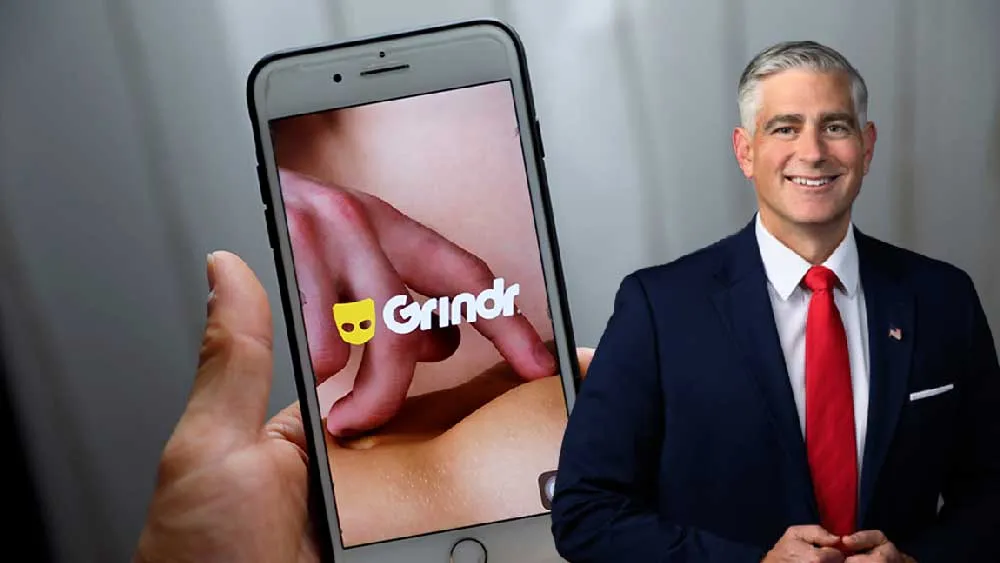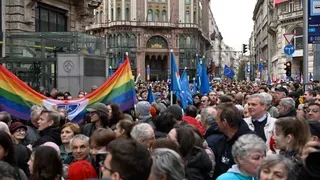September 18, 2014
SF Sizes Up Its Free Condom Program
Kilian Melloy READ TIME: 4 MIN.
The number of free condoms distributed by San Francisco's health department has sizably increased over the years, with nearly 2.3 million given out to various community-based organizations and local businesses last year.
That is an increase from the 1.5 million condoms distributed in 2011.
"It appears there is an increased demand for condoms from what the data indicates. We know that condoms are an important tool in our HIV prevention toolkit," said Tracey Packer, the director of community health equity and promotion at the San Francisco Department of Public Health. "There are other tools as well. Our job is to make sure people have as much access to as many tools as they can have so people can meet their own needs."
The health department now spends roughly $270,000 a year on condoms - it does not receive any donated prophylactics - that are then handed out through three different programs.
"We get a good bulk rate; it is about 11 cents per condom," said Packer.
Packer's section provides condoms to entities that are not HIV-specific service providers, such as neighborhood stores and community groups. Merchants and others that participate in the program receive a monthly shipment of condoms. It also provides condoms to all of the agencies it funds directly, with a line item set aside for condoms written into each contract.
Within the city's gay community, the department purchases the condoms given out through plastic canisters found in gay bars, clubs, and other entertainment venues. The Stop AIDS Project, which is now part of the San Francisco AIDS Foundation, had long overseen the program. SFAF estimates it hands out nearly 1.2 million condoms a year at 90 locations across the city and at special events, like Sunday's Folsom Street Fair.
But Steve Kavanaugh, 56, a gay man and registered nurse, has long complained that the city's free condom program does not hand out enough different-sized prophylactics. It is an issue he has raised since the launch of the program in 1998, when he evaluated it while earning a master's degree in nursing.
"I found that effort well intended if very late but noticed only one size condoms were distributed," he recalled. "One size does not fit all!"
Today, the city purchases a variety of condom sizes based on what is requested from the various distribution points. Most places request an assortment of condom sizes and types, said Packer.
"There is a variety of different condoms we purchase. At our branch, we ask each agency what kind of condoms they prefer," she said. "If their clients ask for a certain size, we will order that size. We provide different sizes, colors, types and brands, etc."
Packer said there has been a recent uptick in requests for condoms sized extra large.
"The San Francisco AIDS Foundation, in particular, includes extra large in their distribution," she said.
Kavanaugh, who continues to monitor the types of condoms the agency hands out, told the Bay Area Reporter that he often finds few condoms other than regular sized ones in the agency's buckets found in bars.
For guys to protect themselves during sex they need access to condoms that properly fit, said Kavanaugh.
"It is a bucket with holes in it," he said. "If you are trying to carry water in a bucket with holes in it, it is not going to work."
Kyriell Noon, SFAF's director of prevention and client services who formerly was executive director of Stop AIDS, said the agency stocks a wide variety of condoms.
"I have a bucket right in front of me. It has different colors, shapes, sizes, different flavors, and different materials. Some are non-latex because some guys are allergic to latex," said Noon. "I haven't noticed a difference in what kind of condoms guys are asking for."
As for if the condoms the city hands out are in fact used, it remains unclear, said Packer, as the health department does not track that information. Instead, she pointed to the results of surveys that the Stop AIDS Project collects and are published in the city's HIV/AIDS Epidemiology Annual Report.
According to the recently released 2013 report, the percentage of HIV-negative gay and bisexual men who reported having condomless anal sex steadily declined from 42 percent in 2006 to 32 percent in 2010, but rose to a high of 51 percent in 2013.
Among HIV-positive men, the percentage who reported having condomless anal sex remained between 57 percent and 63 percent except for two lows, 45 percent in 2008 and 38 percent in 2012.
The report cautioned that the results "may fluctuate" due to the sample size, which varies year to year.
"What we do know is condom use in our population has gone down. People are asking more for lube honestly," said Noon. "They are asking for silicone-based lube as opposed to water-based lube."
As for why the numbers of condoms handed out has gone up when usage has declined, Noon said there are multiple reasons for why people do not use them.
"It is a good question. We are trying to figure it out," he said. "People take them with the intention of using them and wind up not using them."
Nonetheless, Noon said SFAF is committed to keeping its condom distribution program going "as long as people keep taking them."
Kilian Melloy serves as EDGE Media Network's Associate Arts Editor and Staff Contributor. His professional memberships include the National Lesbian & Gay Journalists Association, the Boston Online Film Critics Association, The Gay and Lesbian Entertainment Critics Association, and the Boston Theater Critics Association's Elliot Norton Awards Committee.






